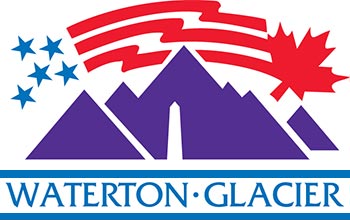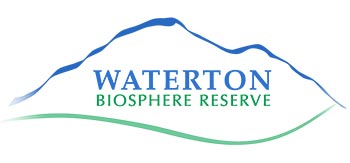
Designation information
Waterton Lakes National Park
Waterton Lakes National Park has several official designations that reflect its significance.
Waterton-Glacier International Peace Park

In 1932, the United States and Canada designated Glacier National Park (Montana) and Waterton Lakes National Park (Alberta) as the Waterton-Glacier International Peace Park. Today, these parks work together to protect the water, plants, and animals within their shared borders, showing how cooperation can make a difference.
This designation first came about at a grassroots level. On July 4 and 5, 1931, the first goodwill meeting of Alberta and Montana Rotarians took place at the Prince of Wales Hotel in Waterton, where nearly 100 members unanimously approved a resolution to establish an International Peace Park (IPP).
In 1932, U.S. legislation to create the IPP was signed into law by President Herbert Hoover on May 2, followed by the Canadian bill on June 16.
Parks Canada opened Waterton’s Peace Park Pavilion on June 18, 1982, for the IPP's 50th anniversary. The pavilion's foundation was removed in 2015, and the new Peace Park Plaza, featuring pathways and exhibits opened in 2018.
World Heritage Site (1995)

The United Nations Educational, Scientific and Cultural Organization (UNESCO) designated Waterton-Glacier International Peace Park a World Heritage Site on December 6, 1995, recognizing its cultural and physical significance.
The parks met two criteria for the designation:
Criterion (vii): to contain superlative natural phenomena or areas of exceptional natural beauty and aesthetic importance.
Noted for their exceptional mountain scenery, glacial landforms, and diverse wildlife and wildflowers.
Criterion (ix): to be outstanding examples representing significant on-going ecological and biological processes in the evolution and development of terrestrial, fresh water, coastal and marine ecosystems and communities of plants and animals.
The Peace Park plays crucial roles in the Western Cordillera's ecology, hosting unique plant communities due to its geographic position. It includes the headwaters of three watersheds, connecting biomes and creating a high diversity of flora and fauna in a small area.
Read more about UNESCO’s selection criteria
World heritage sites in CanadaBiosphere Reserve (1979)

The Waterton Biosphere Region, designated by UNESCO in 1979, is Canada's second biosphere reserve and one of only 19 in the country.
Waterton Lakes National Park was the first Canadian national park to join the program. The region consists of Waterton Lakes National Park as the core area, surrounded by a buffer area of private ranches and farms. Beyond this, a broader area of cooperation includes neighbouring counties, towns, First Nations reserves and public lands. To read more about the Waterton Biosphere Region’s areas of focus, visit them online.

International Dark Sky Park (2017)
In 2017, Waterton Lakes National Park and Glacier National Park were designated as an International Dark Sky Park by the International Dark Sky Association (IDA) as an International Dark Sky Park and reached full certification in 2021.
This marked the first IDA designation to cross an international border. This designation highlights the parks’ commitment to preserving the area’s exceptionally dark skies. Dark Sky Parks also protect nocturnal habitats, enhance public enjoyment of the night sky, and demonstrate leadership on dark sky issues.
Related links
- Date modified :